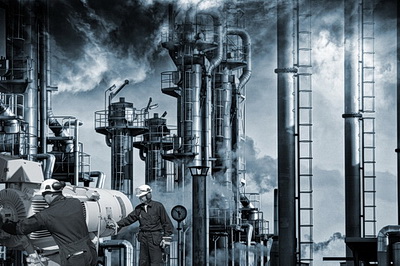
Although arguments have surfaced about how much climate change is affecting our environment during these politically contentious years, one thing is for certain: The burning of fossil fuels, the eruption of volcanoes and rotting plants all release harmful gases. When these gases react with water, oxygen, and other substances in the environment, it results in the production of acid. As the winds blow, this acidic content may spread over hundreds and thousands of miles.
Like the domino effect, the acid then falls from the atmosphere and enters the water system. This results in contamination of the water and subsequently, it affects fish and other species in the water, which can result in contamination of the entire food chain.
When the water is used by other animals or for the cultivation of crops, both the animals and human beings bear the consequences. Acid rain also corrodes away the trees and affects their ability to absorb nutrients from the soil and take up water.
Most of the acid rain today is a result of human activities. And since everything in the environment is closely linked to each other, if something harms one part of the environment, everything else gets affected. Let’s have a detailed look at how acid rain affects the environment. But first, it is important to understand what acid rain is.
What is Acid Rain?
Some natural activities such as rotting vegetation and volcanic activities result in the release of harmful gases. Human activities such as the burning of fossil fuels also result in the release of compounds like sulfur dioxide and oxides of nitrogen. When these gases are released into the air, they react with other substances such as water and oxygen. This reaction results in the formation of acidic pollutants and can easily become a part of the rain, snow and fog.
Normal rain has a pH value between 5.0 and 5.5. So it is slightly acidic. But when acidic pollutants become a part of the rain, it becomes more acidic than normal and is known as acid rain.
Effects of Acid Rain on the Environment
Nature depends on balance. There is a certain percentage of acidic content present in the environment, which is normal, but as one noble writer put it quite eloquently and to the point: “Too much of anything is not good for you”; hence, an overabundance of acidic content will have a negative impact on the environment with which we live.
Effects on Plants and Trees
Acid rain affects plants and trees in multiple ways. When the acidic pollutants are absorbed in the soil, it removes the essential minerals and nutrients. As a result, plants and trees do not get adequate nutrition. Acid rain also allows aluminum to seep into the soil. This affects the ability of the trees to absorb water which is essential for their growth.
Another way through which acid rain affects the trees is by hindering their ability to absorb sunlight. The acidic fog and air do not allow the absorption of sunlight through the leaves. Since the basic requirements for the growth of plants are not met, the trees eventually die.
Effects on Marine and Wildlife

The effects of acid rain are most obvious on the marine ecosystem. As the contaminated water flows through the soil, it can bring along soil that is rich in aluminum to the streams and lakes. Thus, the streams and lakes develop more acidic water along with a higher content of aluminum.
Some marine plants and animals are more resistant to acidic water. However, species that are sensitive to high acidic content suffer greatly due to acid rain. The eggs of most species of fish cannot hatch in an acidic environment. Also, some species of adult fish can actually die.
In cases where the fish can tolerate acidic water, most of the other animals and plants they feed on might not survive in that environment. As a result, the fish die due to inadequate nutrition.
While acid rain directly affects marine species, it indirectly affects birds and other animals as well. Acid rain is known to be the biggest reason for the decline of the population of some species of birds including wood thrush. It also affects animals that depend on marine life for survival. Mammals including bears which heavily depend on fish need to find an alternate source of food due to the decreasing population of these types of fish.
Effects on Humans
The presence of sulfuric and nitric acid in the environment can make the air hazy. This is the reason why acid rain is a primary contributor to the formation of fog and smog. As far as the effect on humans is concerned, walking in acid rain is no more damaging than walking in normal rain. However, the presence of pollutants in the air can have a harmful effect on human health. The presence of acidic pollutants affects the quality of air. The sulfate and nitrate particles in the air can affect the function of the heart and lungs. Thus, acid rain is one of the major causes of increasing respiratory problems in humans including asthma, bronchitis and pneumonia.
Conclusion
Apart from living things, acid rain is known to affect non-living things as well. It can corrode buildings, statues and other man-made structures. Though sulfur dioxide and nitrogen oxide are not greenhouse gases, they definitely have an important effect on the recent climate change as both these gases have serious effects on the environment. Since the primary source of these gases comes from burning fossil fuels, by reducing the reliance on fossil fuels, we can control the damaging effects of acid rain.
